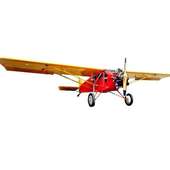- Shopping tips to reduce holiday stress (11/29/24)
- The power of shopping locally: Strengthening our community (11/27/24)
- Presidential Scholars Program combats Nebraska’s brain drain (11/26/24)
- Why ‘Impoundment’ matters (11/22/24)
- Time for reform to ensure future of Social Security (11/21/24)
- A standing ovation for ‘Elf the Musical’ (11/19/24)
- AI’s influence on the 2024 election – not as damaging as feared (11/15/24)
Editorial
It's the most (deer) dangerous time of the year
Wednesday, October 24, 2012
If you haven't heard the popular recording of a radio call to a Fargo, North Dakota, radio station, it's worth a listen (visi http://youtu.be/CI8UPHMzZm8 for a YouTube version).
A woman caller named Donna is perplexed as to why authorities won't move the "Deer Crossing" signs off the busy roads where cars, including hers, frequently strike and kill the animals.
Why can't they be put on side roads, or school zones, were cars are less likely to strike the deer, she asks the radio show hosts, apparently in complete honesty.
In a return call the following day, she insisted she was asking a sincere question, oblivious to the idea the signs are for drivers' benefit, not the deer. Perhaps they don't recognize themselves on the signs, because the antlers are on backwards.
Nebraska ranks high in deer collisions, according to information compiled by State Farm Insurance, listed 12th among the states with more than 12,000 incidents estimated in the year ended July 1, 2012.
No wonder Nebraskans use the phrase "Watch for deer!" to departing travelers the way Hawaiians use "aloha!" Perhaps Hawaiians say "aloha" instead because they have only a 1 in 6,801 chance of striking a deer in the next 12 months, about the same as getting struck by lightning in their lifetime.
That compared to a Nebraskan's 1 in 106.4 chance, down from 10th place last year.
The most difficult place for drivers to avoid deer is West Virginia, which placed No. 1 for the last six years, with a 1 in 40 chance of striking a deer this coming year.
Nationally, your chance of striking a deer is 1 in 171, about the same chance of having your return audited by the Internal Revenue Service.
State Farm notes that the month when you're most likely to strike a deer is November, which is the month for more than 18 percent of all such mishaps. They're three times more likely to occur in November that they are on any day between Feb.1 and Aug. 31.
The company estimated 1.23 million collisions caused by deer last year, causing an average property damage of $3,305, up 4.4 percent from the year before.
As we move into the most dangerous time of the year when it comes to deer, the company offers the following tips:
* Keep in mind that deer generally travel in herds -- if you see one, there is a strong possibility others are nearby.
* Be aware of posted deer crossing signs. These are placed in active deer crossing areas.
* Use high beam headlamps as much as possible at night to illuminate the areas from which deer will enter the roadways.
* If a deer collision seems inevitable, attempting to swerve out of the way could cause you to lose control of your vehicle or place you in the path of an oncoming vehicle.
* Don't rely on car-mounted deer whistles.

